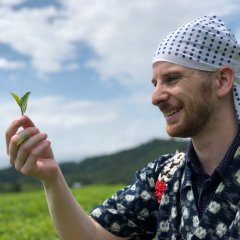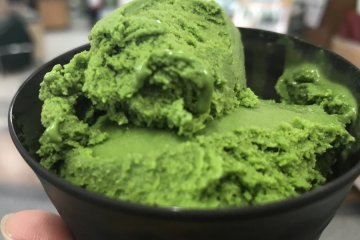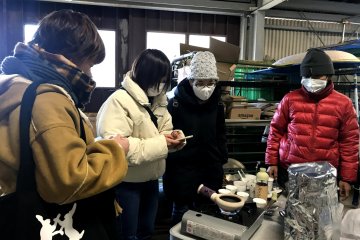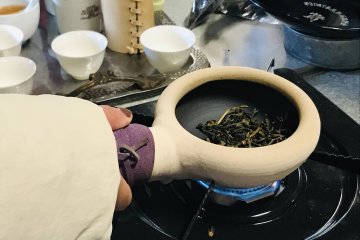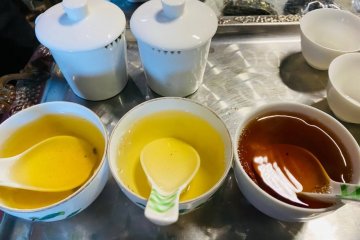Seasonal foods are common throughout Japan, but did you know that there are also seasonal flavors for tea? Well, either way you're about to find out!
Green teas (matcha, sencha, etc) are popular worldwide, and are typically made from the young leaves from the tea plant. However, at Kama-iri-cha Shibamoto, a tea plantation in the Makinohara district of Shizuoka Prefecture, they break the norm by creating a type of roasted tea called Houji-cha, which instead is made from tea leaves harvested in the autumn. This more mature leaf is distinctly hard to the touch compared to the younger leaves of the spring, making it unsuitable for typical green teas, but perfect for roasting into a new type of tea, Houji-cha.

The tea master Toshifumi Shibamoto welcomes visitors from all over to join in a unique experience of this tea roasting, and sampling the different varieties and blends that can be made from these mature leaves.
It starts with sampling the original Houji-cha prepared by the master. Its appearance is brown in color, and the taste is far from that of ordinary green tea, with a warm, smokey flavor.
The master then presents three varieties of teas - green tea, oolong tea, and black tea - and asks which one should be roasted in an interactive demonstration. He also kindly sets all of them out for tasting, so the full process of roasting to tasting can be experienced.

A little known fact is that the tea leaves from the same plant can become green tea, oolong tea, black tea, and other types, depending on how it is processed. Steamed and processed to become green tea; half fermented to become oolong tea; and totally fermented to become black tea. But wait, there's more... the master then explained that all of them can become Houji-cha!

To be adventurous, all of the varieties were selected to compare the difference. It is always fun to experience it first hand. The tea master led the interactive demonstration, and it was incredible to witness the change in the tea in real time, complemented by the wonderful aroma. In the demonstration, a ceramic pan was used, but he said that at home a frying pan is just as good.

The sound of roasting, the smell of smoke, the sense of heat, concentration is paramount, because otherwise it would quickly burn to a crisp. Success! Roasting green tea was a blast, and a newly acquired skill to keep trying at home.
Kama-iri-cha Shibamoto also has a “tea terrace”, called The Landscape Tea Terrace, which even in colder seasons can be enjoyed when the sun shines. The terrace is for private use only, and perfect for those who seek to be isolated from the world, floating in the middle of a tea plantation! I'd recommend going in late spring, as that is when the smell from the plantation is the strongest.
Kama-iri-cha Shibamoto is definitely a place to check out, especially if you're keen to expand your world of tea into the realm of roasting!



